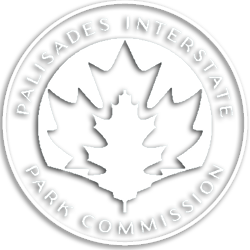The Three Ghosts of Forest View
A “Cliff Notes” Story
June 1999
A favorite springtime hike in the Palisades begins at Alpine Picnic Area and follows the Shore Trail north to the area called Forest View. The first mile takes you up an old cobblestone road and then winding along a broad ledge above the Hudson, shaded by century-old tulip and maple trees, the spring bird song gently punctuated by a waterfall steeped in green moss. In the second mile, the Shore Trail drops down to river level again, the pathway becoming rockier, shade replaced by sunlight, ancient trees by a riot of tangled new growth (yes, including robust stands of poison ivy). Before mile three is reached, the rocky footing finally gives way to a wide grassy path, and the Hudson, here almost a mile wide, is never more than a few feet to your right beyond the stone sea wall. To the left a perpetually young forest climbs the steep slope, offering a bit of shade, now and again. And then that vanishes, too — and all at once you meet the Palisades, as only a relatively few of the millions of people who live near them or travel over or through or around them have.
You are now at the base of a true talus slope, a vast jumble of boulders fallen from the cliffs over the millennia — some are the size of small houses — interlaced with grown trees that cling to improbable niches. Above the talus, sheer brown-gray columns of cliff-face, 300 to 400 feet tall, extend for over a mile ahead. Butterflies flit over the grassy path. Once in a while as you walk, from deep within the talus, a mysteriously steady blast of cold air blows across the trail, even on a scorcher of a day.
Still farther along, the area between the talus and the river widens, the trail staying closer to the talus than the water. A hike in the New Jersey Palisades could not feel any wilder, any more remote. Indeed, with the tall cliffs always looming overhead, the feeling is of no longer being in New Jersey at all, but somewhere Western, wild, canyon-like. Though still only a foot or two above sea level, the view of the Hudson is lost to a tangle of green meadow, alive with crickets and grasshoppers and still more butterflies. Several small trees — it’s impossible to tell what they are — each only a dozen feet tall or so, stick up like hairy sentinels above the meadow, each completely enmeshed in vines. And here, amid the bright sun and fragrant green growth and butterflies, lurks the first ghost of Forest View. For one of those vine-covered sentinels in the meadow is not a tree at all. It is instead the chain-link backstop from an overgrown ballfield.


A second ghost is much more obvious — if you’re willing to climb the steep Forest View Trail to where the Women’s Federation Monument stands cliff-top watch over the river. From this vantage point, with each turn of the tides the outline of an abandoned marina becomes slowly apparent and then vanishes twice each day, dozens of wooden pilings and a long stone jetty emerging from and returning to the murk of the Hudson. Also more apparent from above than from ground level is a large square area in the meadow, littered with discarded timber — and our third ghost. This was the site of the Forest View pavilion, once set in the midst of several acres of mowed lawns beside the marina and the ballfield.
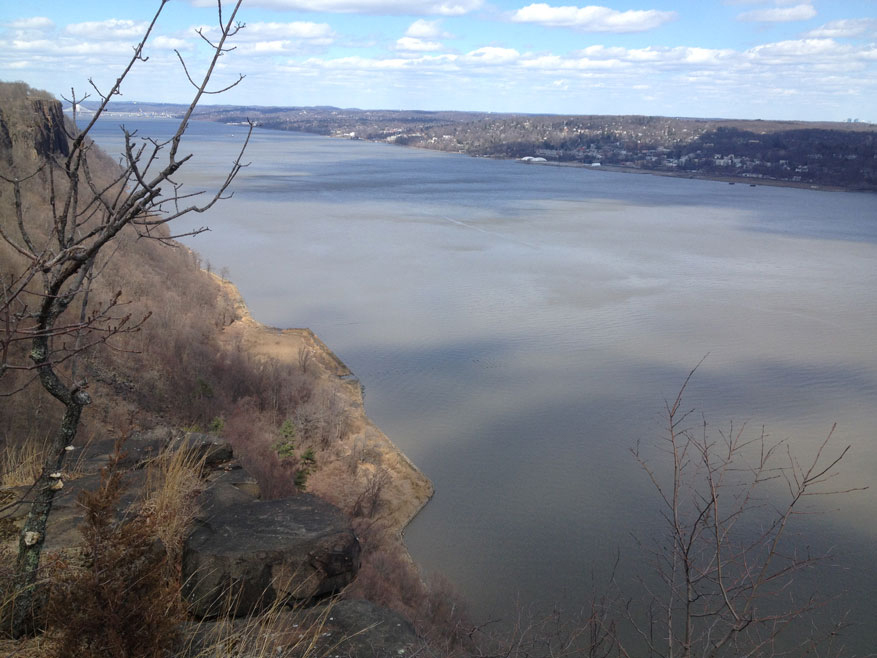
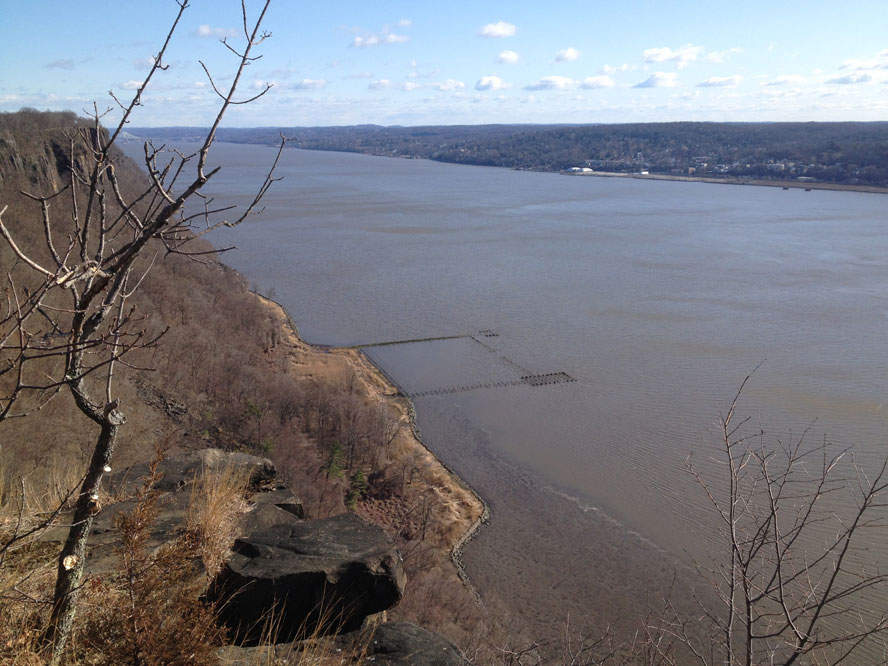
Even for those of us who have worked in the park for a number of years, it can be surprising to learn that one of our largest recreational areas — a “playground,” to use the parlance of its day — once existed here, at what is today a rugged and remote corner of the Palisades. It may tell us something about how our recreational habits have changed, and what the word “park” has come to mean over the years.
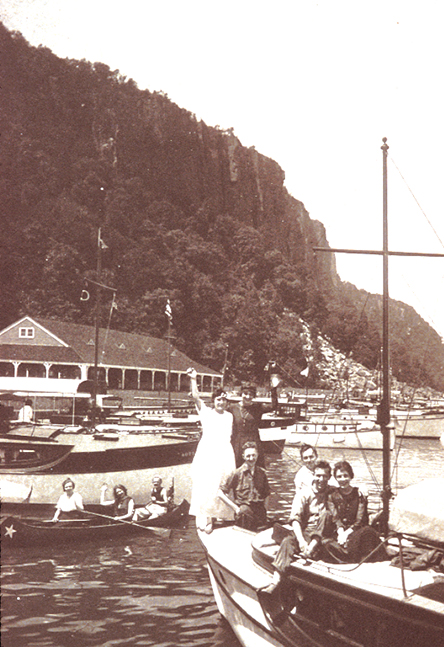
Forest View was one of the first large “playground” areas built by the Palisades Interstate Park Commission in the decades after its creation in 1900 — a time when automobiles, while no longer a novelty, were not yet truly commonplace. As such, the area was built without a parking lot. Access to the facilities — the pavilion, restrooms, water fountains (with “city water”), ballfield — was meant to be by foot (three miles from the Yonkers Ferry landing, or down — and, at the end of the day, back up — the steep trail to Federation Park) or by boat. By “boat,” we mean excursion craft that, for the most part, left from New York or Yonkers and stopped at jetties by several of the picnic groves and campsites now also all but vanished along the Shore Trail: Quinn’s, Excelsior Dock, Twombly’s Landing, Forest View. By the early 1930s, as privately owned motor boats became more common, the marina was built, intended for weekend use. (This did not prove cost effective, and the slips were closed after 1940, though boats were still permitted to moor off-shore, at no charge.)
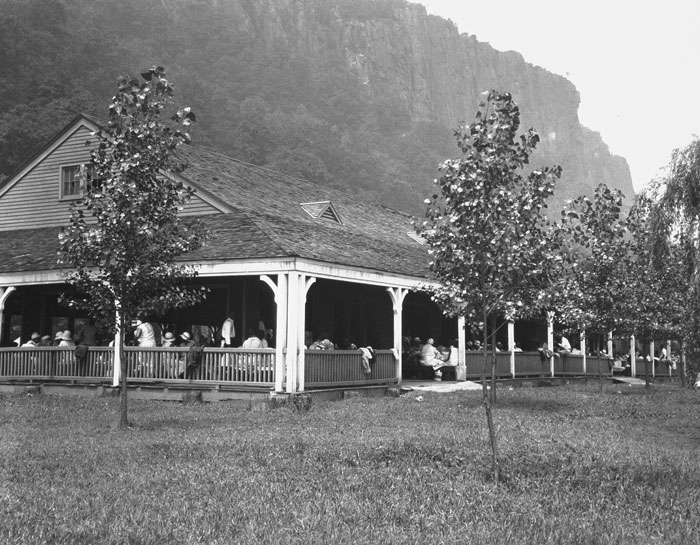
In the first decade after World War II, the area still received a fair amount of use. The lawns were mowed, the pavilion painted, various facilities repaired. But in time, fewer and fewer picnickers made the trek to Forest View. The excursion boats no longer ran, while the now ubiquitous automobile made previously far-flung areas, such as the Jersey Shore, accessible to most everyone. And so it came to be that in the early 1960s, the lawns at Forest View were mowed for the last time.
A sad story, in some ways. Yet we’re sure, too, that a great many hikers and nature lovers (not to mention crickets and butterflies) would be only too glad to know that a tangled meadow today exists in this New Jersey “park,” where each spring thousands once crowded together to cook wieners or crack a bat…
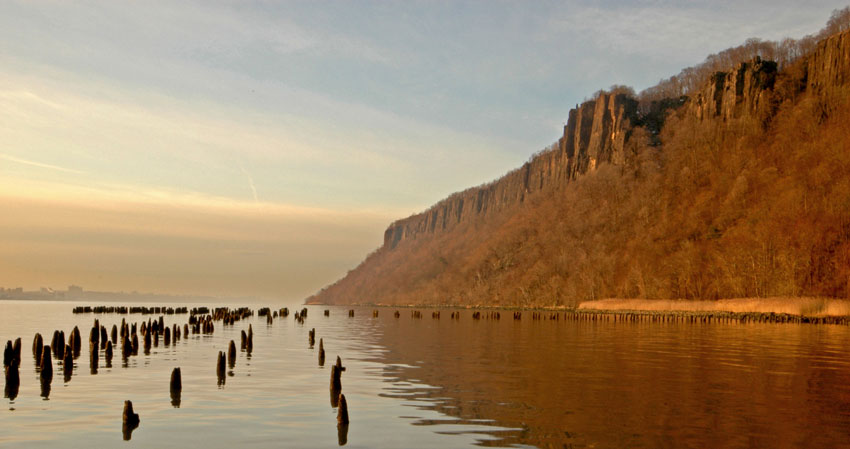
– Eric Nelsen –

